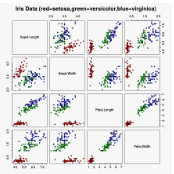Current research in iris recognition is moving towards enabling more relaxed acquisition conditions. This has effects on the quality of acquired images, with low resolution being a predominant issue. Here, we evaluate a super-resolution algorithm used to reconstruct iris images based on Eigen-transformation of local image patches. Each patch is reconstructed separately, allowing better quality of enhanced images by preserving local information. Contrast enhancement is used to improve the reconstruction quality, while matcher fusion has been adopted to improve iris recognition performance. We validate the system using a database of 1,872 near-infrared iris images. The presented approach is superior to bilinear or bicubic interpolation, especially at lower resolutions, and the fusion of the two systems pushes the EER to below 5% for down-sampling factors up to a image size of only 13x13.
翻译:目前对虹膜识别的研究正在向更宽松的获取条件迈进。 这对已获得图像的质量产生了影响, 低分辨率是一个主要问题。 在这里, 我们评估了一种超分辨率算法, 用来重建基于本地图像补丁的光子变异的虹膜图像。 每个补丁都是分开重建的, 通过保存本地信息可以提高强化图像的质量。 对比强化用于提高重建质量, 而配对聚合则用来提高虹膜识别性能。 我们使用一个数据库来验证系统, 数据库有1, 872个近红外的虹膜图像。 所提出的方法优于双线或双立干涉, 特别是在低分辨率上, 两种系统的融合将EER推向5%以下, 用于下标系数, 下标的大小仅为13x13。




